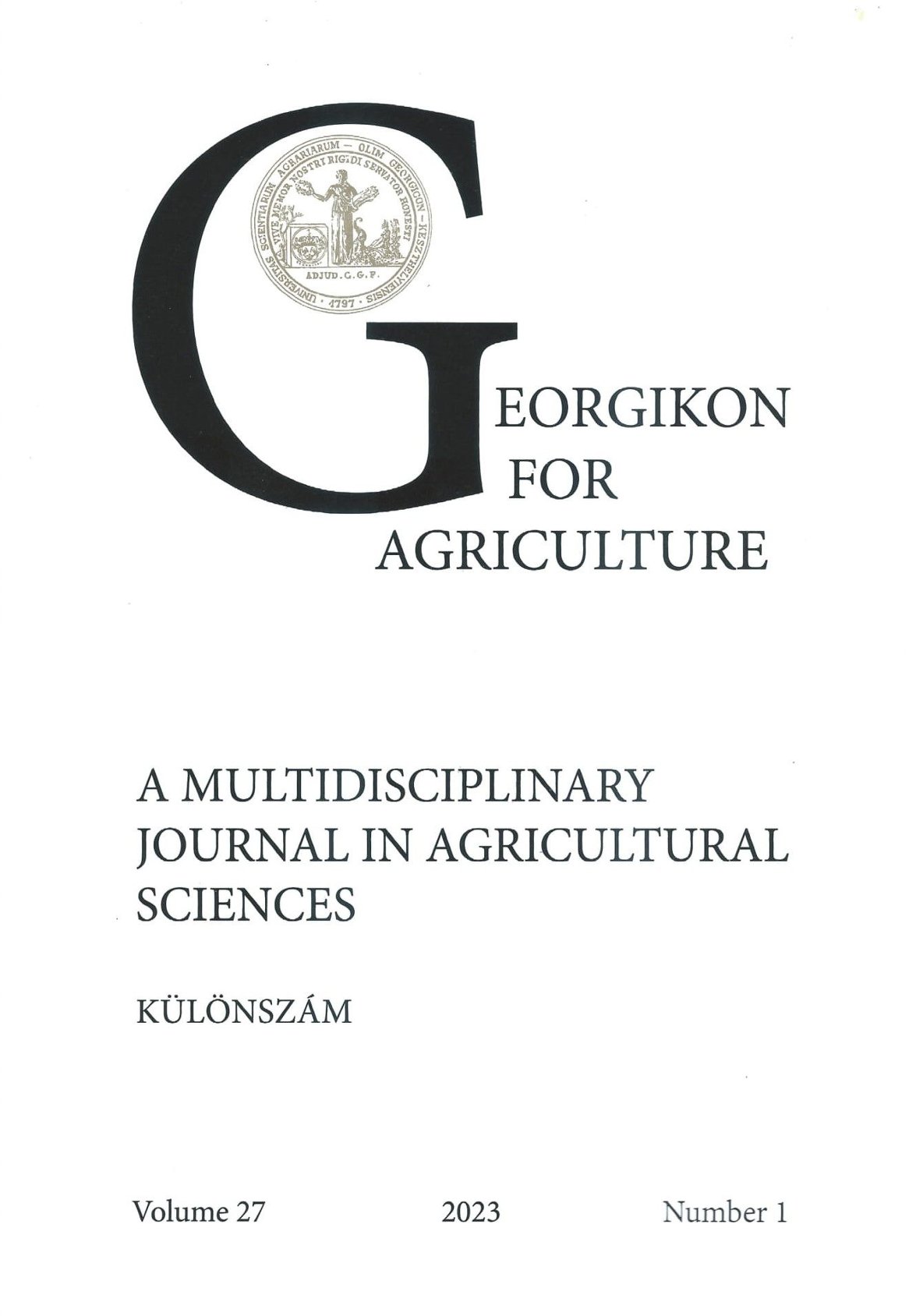A klimatikus tényezők és a gyomflóra változás összefüggései
Kulcsszavak:
országos gyomfelvételezések, klímaváltozás, életforma, ökológiai indikátorokAbsztrakt
A klímaváltozás kedvezőtlen hatásai növénytermesztési és növényvédelmi szempontból elsősorban a légkör szén-dioxid tartalmának, az aszályos és hőségnapok számának emelkedésében, valamint a szélsőséges klimatikus történésekben (pl. hirtelen lezúduló nagy mennyiségű, özönvízszerű csapadék) nyilvánulnak meg. Vizsgálatainkban a három legutóbbi országos szántóföldi gyomfelvételezés során az első legfontosabb húsz gyomfaj analízisét végeztük el, a hőmérsékleti és vízigény, a géncentrum és az életforma elemzése kapcsán. Eredményeink arra utalnak, hogy a klímaváltozás fontos, de nem a legdominánsabb faktora a gyomflóra változásának.
Hivatkozások
Babinszky, L., Dunkel, Z., Tóthi, R., Kazinczi, G. and Nagy, J. 2011. The impacts of climate change on agricultural production. Hungarian Agricultural Research 20(2). 14-20.
Ellenberg, H., Weber, H.E., Düll, R., Wirth, W., Werner, W. und Paulissen, D. 1991. Zeigenverte von Pflanzen in Mitteleuropa. Scripta Geobotanica 18. Goltze Vrl. Göttingen
Glemnitz, M., Czimber, Gy., Radics, L. and Hoffmann, J. 2000. Weed flora composition along a north-south climate gradient in Europe. Acta Agronomica Ovariensis 42(2). 155-169.
Glemnitz, M., Radics, L., Hoffmann, J. and Czimber, Gy. 2019. The evidence of large scale empirical weed flora data for climate change adaptation research - a review. Hungarian Weed Research and Technology 20(1). 3-26.
Horváth F., Dobolyi Z., Morschauser T., Lökös L., Karas L. és Szerdahelyi T. 1995. FLÓRA Adatbázis. 1.2. Taxonlista és attribútum állomány. MTA-ÖBKI, Vácrátót
Kazinczi G. 2011. Növényföldrajzi-ökológiai elemzések. In: Novák R., Dancza I., Szentey L. és Karamán J. (szerk.) Az Ötödik Országos Gyomfelvételezés Magyarország szántóföldjein. VM Élelmiszerlánc-felügyeleti Főosztály, Növény- és Talajvédelmi Osztály, Budapest 313-348.
Kazinczi G., Reisinger P. és Mikulás J. 2004. Az időjárás változás hatásai a herbológia területén. Magyar Gyomkutatás és Technológia 5(2). 3-25.
Novák, R. et al. 2022. Change in the spread of common ragweed in Hungary in the light of the national arable weed surveys (1947-2019). Ecocycles 8(3). 45-46.
Simon T. 1992. A magyarországi edényes flóra határozója. Harasztok-virágos növények. Tankönyvkiadó, Budapest
Solymosi P. 2005. Az éghajlatváltozásának hatása a gyomflórára a hazai kutatások tükrében, az 1969 és 2004 közötti időszakban. Növényvédelem 41(1). 13-24.
Soó R. 1973. A magyar flóra és vegetáció rendszertani-növényföldrajzi kézikönyve. Akadémiai Kiadó, Budapest
Szőke L. és Dávid I. 2011. Az éghajlatváltozás hatása a gyomnövényzetre. In: In: Novák R.,
Dancza I., Szentey L. és Karamán J. (szerk.) Az Ötödik Országos Gyomfelvételezés Magyarország szántóföldjein. VM Élelmiszerlánc-felügyeleti Főosztály, Növény- és Talajvédelmi Osztály, Budapest 358- 366.
Letöltések
Megjelent
Folyóirat szám
Rovat
License
Copyright (c) 2023 Kazinczi Gabriella, Pásztor György

This work is licensed under a Creative Commons Attribution-NonCommercial-NoDerivatives 4.0 International License.
The articel is under the Creative Commons 4.0 standard licenc: CC-BY-NC-ND-4.0. Under the following terms: You must give appropriate credit, provide a link to the license, and indicate if changes were made. You may do so in any reasonable manner, but not in any way that suggests the licensor endorses you or your use. You may not use the material for commercial purposes. If you remix, transform, or build upon the material, you may not distribute the modified material. You may not apply legal terms or technological measures that legally restrict others from doing anything the license permits.




 Georgikon for Agriculture
Georgikon for Agriculture